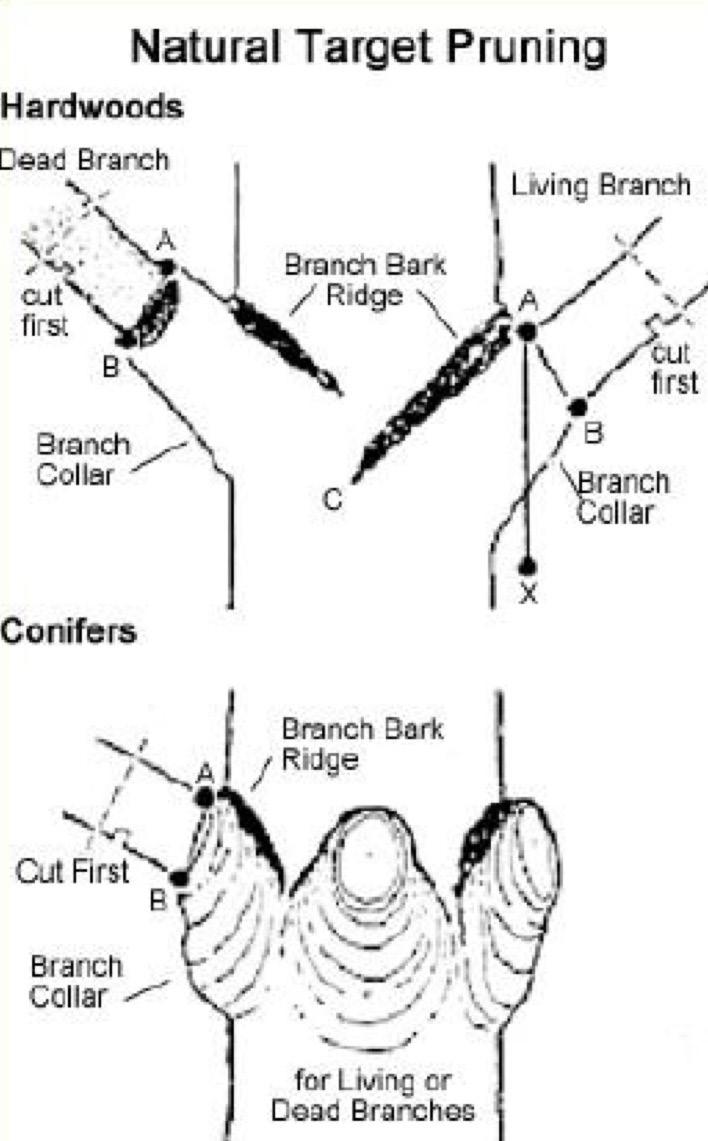
2 minute read
CAMPUS TREE CARE PLAN
2.02.0 CONTRACTORS WILL APPLY THE STANDARDS AND GUIDELINES WHEN ENGAGED IN PRUNING OPERATIONS ON CAMPUS.
To ensure that pruning is appropriate for the species and tree/site conditions, it is important to have a clear understanding of the specific needs of the tree and the objectives for pruning. Pruning objectives shall comply to section 2.04.0.
Advertisement
2.03.0 REQUIREMENTS FOR PRUNING TREES
2.03.1 No more than 25% of the tree may be pruned. Anything above 25% must be discussed and approved by contracted landscape architects and/or arborist.
2.03.2 No tree shall be cut back in such a manner that its health will be impaired. An exception to this may occur in tree removal or emergency storm damage situations in which protecting people or property is urgent. Any emergency procedures shall be brought to the attention of the contracted landscape architects and/or arborist.
2.03.3 When pruning cuts are made to a lateral branch, the remaining branch must possess a basal thickness of at least half the diameter of the wound affected. Such cuts shall be considered correctly done when the branch collar is left intact and the cut is not “flush” with the stem.
2.03.4 Tree branches shall be removed and controlled in such a manner as not to cause damage to other parts of the tree or to other plants and property.
2.03.5 All cutting tools and saws used in pruning shall be kept adequately sharpened so as to retain smooth surfaces and secure bark on all cuts.
2.03.6 Precautions for the inadvertent transmittal of oak wilt will be recognized. This includes the disinfecting of cutting tools between trees and cuts to be treated with tree wound dressing.
2.04.0 PRUNING OBJECTIVES
2.04.1 Maintenance Pruning: Recommended when the primary objective is to maintain or improve tree health and structure, and includes risk reduction pruning.
2.04.2 Risk Reduction Pruning: Recommended when the primary objective is to reduce overall tree risk and chance of limb or tree failure.

2.05.0 PRUNING TYPES
2.05.1 Crown Cleaning: The selective removal of one or more of the following items: dead, dying or diseased branches, weak branches and water sprouts.
2.05.2 Crown Thinning: The selective removal of branches to increase light penetration, air movement and to reduce weight.
2.05.3 Crown Raising: The removal of lower branches to provide clearance.
2.05.4 Crown Reduction or Shaping: Decrease the height and/or spread of a tree. Consideration should be given to the ability of the species to sustain this type of pruning.
2.05.5 Vista Pruning: The selective thinning of framework limbs or specific areas of the crown to allow a view of an object from a predetermined spot.
2.05.6 Crown Restoration: Should improve the structure, form and appearance of trees that have been severely headed, vandalized or storm damaged.
2.06.0 CAMPUS CLEARANCE RECOMMENDATIONS
2.06.1 All trees and/or branches in or around infrastructure shall be shortened or removed when necessary to prevent damage to infrastructure or tree.
2.06.2 Growth on the tree should be directed away from infrastructure such as buildings light poles power lines and signs by reducing and/or removing limbs on that area of the tree.
2.06.3 Vertical clearance for roads shall be in accordance with RGV city code Section 6-3-25 and provide a minimum clearance of 14 above street level. An 8-foot vertical clearance shall be provided for pedestrian walkways.
2.06.4 Building Clearance: Clear all branches and foliage in contact with or within 2 foot of roofs, walls, stairways, decks or other building appendages to the extent feasible while maintaining aesthetics and canopy structure. Prune to direct growth parallel to or away from the building.









